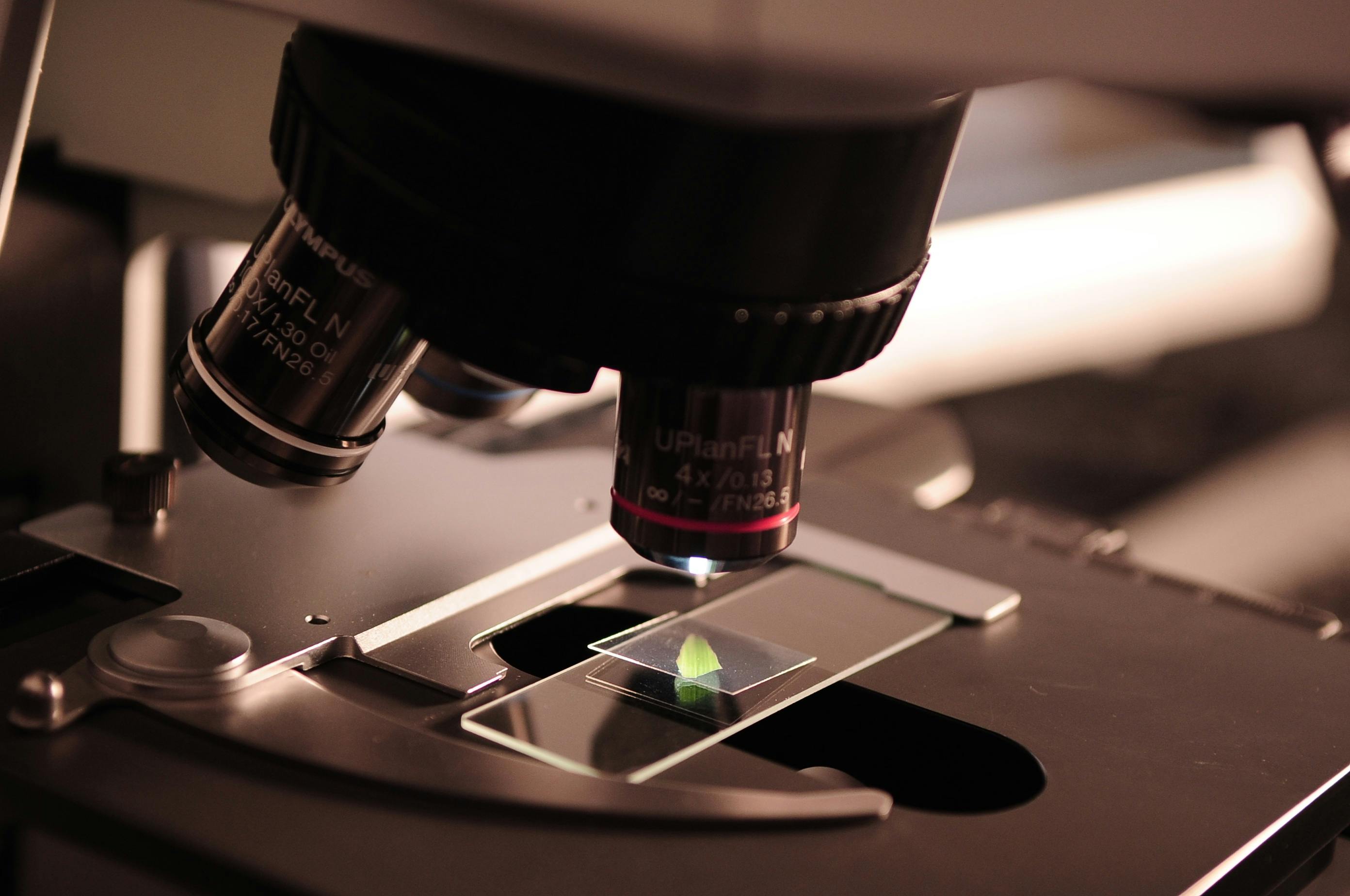Shape Shifters
How Geometry Revolutionizes Our Understanding of Life's Designs
From ancient stone tools to deep-sea creatures and human health, the science of shape reveals nature's hidden blueprints.
The Language of Form
What do a dinosaur skull, a human heart, and a Neolithic tool have in common? Their shapes hold evolutionary secrets, functional capabilities, and historical clues. Morphometry—the quantitative study of form—has transformed from simple caliper measurements to a 3D geometric revolution. By translating biological structures into mathematical landscapes, scientists now decode how form relates to function, evolution, and health 1 . This article explores how geometric morphometrics (GM) cracks nature's shape code and why its integration with AI, ecology, and genomics heralds a new era of discovery.
1. Key Concepts: Geometry Meets Biology
1.1 Beyond "Measure Twice, Cut Once"
Traditional measurements (lengths, angles) fail to capture complex shapes like curving shells or asymmetrical bones. Geometric morphometrics uses landmarks—precisely defined points like suture intersections or tooth cusps—to map forms in 2D or 3D space. Using algorithms like Generalized Procrustes Analysis (GPA), researchers superimpose these landmarks, removing differences in position, rotation, and scale to isolate pure shape variation 5 6 .
1.2 The Function-Form Puzzle
A core challenge is linking shape to biological roles. As highlighted in the symposium Assessing Function via Shape, GM alone cannot explain why a bat's wing or a fish's jaw evolves a specific geometry. Integration with biomechanics, physiology, and genomics is essential 1 . For instance:
1.3 The Volumetric Leap
While early GM focused on surfaces, modern techniques like Spherical Wave Decomposition (SWD) analyze internal 3D structures from CT scans. This captures hidden features like brain cavities or bone density, unlocking "volumetric morphospace" .

2. Key Experiment: Decoding Cryptic Deep-Sea Isopods
Why do species that look identical genetically diverge? A landmark study on Macrostylid isopods reveals GM's power to distinguish the indistinguishable.
2.1 Methodology: Landmarking the Invisible
- Species: 41 specimens of 5 deep-sea isopod species (Macrostylis spinifera, M. subinermis, etc.) from Icelandic waters 2 .
- Landmarking: 3 fixed landmarks and 66 semi-landmarks placed on the pleotelson (tail plate), a key diagnostic structure. Semi-landmarks captured curves between fixed points using Thin-Plate Spline (TPS) algorithms 2 .
- Analysis:
- Procrustes Superimposition: Aligned all specimens.
- Principal Component Analysis (PCA): Visualized shape variation in "morphospace."
- Canonical Variate Analysis (CVA): Tested species discrimination statistically.
Table 1: Key Landmarks on Isopod Pleotelson
| Landmark | Anatomical Location | Functional Significance |
|---|---|---|
| Lmk1 | Junction of pleotelson & pereonite | Anchors body segments |
| Lmk2 | Midpoint of posterior apex | Influences swimming/steering |
| Lmk3 | Uropod insertion point | Relates to appendage mobility |
2.2 Results & Analysis: Seeing the Unseeable
- PCA showed distinct clusters for each species in morphospace. M. spinifera and M. sp. aff. spinifera overlapped slightly but diverged in posterior apex curvature.
- CVA confirmed significant interspecies differences (p < 0.001). Correct classification rates exceeded 95% 2 .
Table 2: Morphometric Discrimination of Isopod Species
| Species Pair | Mahalanobis Distance | p-value |
|---|---|---|
| M. spinifera vs M. subinermis | 8.21 | <0.001 |
| M. longiremis vs M. magnifica | 7.94 | <0.001 |
| M. spinifera vs M. sp. aff. spinifera | 5.67 | 0.003 |

Scientific Impact
This study proved GM detects "cryptic diversity" where traditional taxonomy fails—critical for conserving poorly known deep-sea ecosystems.
[Interactive PCA plot of isopod morphospace would appear here]
3. The Scientist's Toolkit: Essentials of Geometric Morphometrics
Table 3: Research Reagent Solutions for GM
| Tool | Function | Example/Application |
|---|---|---|
| Landmarking Software | Digitizes & manages landmarks | TPSDig, Stratovan Checkpoint 5 |
| Statistical Packages | Analyzes shape data | MorphoJ, geomorph 2 5 |
| 3D Imaging Tech | Captures internal/external geometry | CT scanners, laser surface scanners 7 |
| Registration Algorithms | Aligns complex shapes | Procrustes GPA, Symplectomorphic Registration 6 |
| Functional Data Analysis (FDA) | Models shapes as continuous curves | Machine learning classification 4 |


4. The Future: Where Geometry Meets Tomorrow
4.1 AI and Machine Learning
Functional Data Analysis (FDA) converts landmarks into continuous curves, improving sensitivity to subtle variations. In shrews, FDA with Support Vector Machines (SVMs) achieved 98% species classification accuracy from skull contours—outperforming traditional GM 4 .
4.2 From Form to Function
New methods like techno-structural analysis combine GM with engineering principles. For example, studying 67 Holocene-era unifacial tools from Brazil revealed 9 distinct shape classes linked to ergonomic grips and material constraints—rewriting assumptions about "primitive" technology 3 .
4.3 Health and Disease
GM detects subtle torso shape changes in humans that predict metabolic risks better than BMI. In the LIFE-Adult Study of 9,209 people, torso shape variations explained 49.92% (males) and 47.46% (females) of health-related morphology—far beyond waist girth alone 7 .
4.4 The Grand Synthesis
The future lies in integrating GM with genomics, ecology, and development. As articulated in Morphometry, Geometry, Function, and the Future, understanding how selection acts on form requires cross-disciplinary "adaptive pathways" 1 .
[Interactive 3D morphospace visualization would appear here]
Conclusion: Shape as a Universal Currency
Geometric morphometrics has evolved from a niche tool to a universal framework bridging paleontology, medicine, and conservation. By quantifying the geometry of life, we uncover how evolution sculpts functional designs, how environments shape bodies, and how health leaves imprints on form. As machine learning automates shape analysis and 3D imaging becomes ubiquitous, morphometry promises not just to describe nature—but to predict it.
"The day science begins to study non-physical phenomena, it will make more progress in one decade than in all the previous centuries of its existence."
For Further Reading
Explore datasets from the LIFE-Adult Study 7 or the SAPID volumetric toolkit .